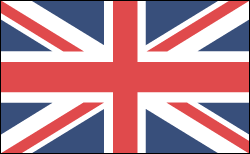Senin, 25 April 2011
UNITED KINGDOM
Geography
The United Kingdom, consisting of Great Britain (England, Wales, and Scotland ) and Northern Ireland , is twice the size of New York State. England, in the southeast part of the British Isles, is separated from Scotland on the north by the granite Cheviot Hills; from them the Pennine chain of uplands extends south through the center of England, reaching its highest point in the Lake District in the northwest. To the west along the border of Wales—a land of steep hills and valleys—are the Cambrian Mountains, while the Cotswolds, a range of hills in Gloucestershire, extend into the surrounding shires.
Important rivers flowing into the North Sea are the Thames, Humber, Tees, and Tyne. In the west are the Severn and Wye, which empty into the Bristol Channel and are navigable, as are the Mersey and Ribble.
Government
The United Kingdom is a constitutional monarchy and parliamentary democracy, with a queen and a parliament that has two houses: the House of Lords, with 574 life peers, 92 hereditary peers, and 26 bishops; and the House of Commons, which has 651 popularly elected members. Supreme legislative power is vested in parliament, which sits for five years unless dissolved sooner. The House of Lords was stripped of most of its power in 1911, and now its main function is to revise legislation. In Nov. 1999, hundreds of hereditary peers were expelled in an effort to make the body more democratic. The executive power of the Crown is exercised by the cabinet, headed by the prime minister.
England has existed as a unified entity since the 10th century; the union between England and Wales, begun in 1284 with the Statute of Rhuddlan, was not formalized until 1536 with an Act of Union; in another Act of Union in 1707, England and Scotland agreed to permanently join as Great Britain ; the legislative union of Great Britain and Ireland was implemented in 1801, with the adoption of the name the United Kingdom of Great Britain and Ireland; the Anglo-Irish treaty of 1921 formalized a partition of Ireland; six northern Irish counties remained part of the United Kingdom as Northern Ireland and the current name of the country, the United Kingdom of Great Britain and Northern Ireland, was adopted in 1927.
History
Stonehenge and other examples of prehistoric culture are all that remain of the earliest inhabitants of Britain. Celtic peoples followed. Roman invasions of the 1st century B.C. brought Britain into contact with continental Europe. When the Roman legions withdrew in the 5th century A.D. , Britain fell easy prey to the invading hordes of Angles, Saxons, and Jutes from Scandinavia and the Low Countries. The invasions had little effect on the Celtic peoples of Wales and Scotland. Seven large Anglo-Saxon kingdoms were established, and the original Britons were forced into Wales and Scotland. It was not until the 10th century that the country finally became united under the kings of Wessex. Following the death of Edward the Confessor (1066), a dispute about the succession arose, and William, Duke of Normandy, invaded England, defeating the Saxon king, Harold II, at the Battle of Hastings (1066). The Norman conquest introduced Norman French law and feudalism.
England's Empire Grows While the American Colonies Revolt
Queen Anne's reign (1702–1714) was marked by the Duke of Marlborough's victories over France at Blenheim, Oudenarde, and Malplaquet in the War of the Spanish Succession. England and Scotland meanwhile were joined by the Act of Union (1707). Upon the death of Anne, the distant claims of the elector of Hanover were recognized, and he became king of Great Britain and Ireland as George I. The unwillingness of the Hanoverian kings to rule resulted in the formation by the royal ministers of a cabinet, headed by a prime minister, which directed all public business. Abroad, the constant wars with France expanded the British Empire all over the globe, particularly in North America and India. This imperial growth was checked by the revolt of the American colonies (1775–1781). Struggles with France broke out again in 1793 and during the Napoleonic Wars, which ended at Waterloo in 1815.
Democratic Government Emerges
The Victorian era, named after Queen Victoria (1837–1901), saw the growth of a democratic system of government that had begun with the Reform Bill of 1832. The two important wars in Victoria's reign were the Crimean War against Russia (1854–1856) and the Boer War (1899–1902), the latter enormously extending Britain's influence in Africa. Increasing uneasiness at home and abroad marked the reign of Edward VII (1901–1910). Within four years of the accession of George V in 1910, Britain entered World War I when Germany invaded Belgium. The nation was led by coalition cabinets, headed first by Herbert Asquith and then, starting in 1916, by the Welsh statesman David Lloyd George. Postwar labor unrest culminated in the general strike of 1926.
King Edward VIII succeeded to the throne on Jan. 20, 1936, at his father's death, but he abdicated on Dec. 11, 1936 (in order to marry an American divorcée, Wallis Warfield Simpson), in favor of his brother, who became George VI.
Read more: United Kingdom: History, Geography, Government, and Culture — Infoplease.com http://www.infoplease.com/ipa/A0108078.html?pageno=5#ixzz1Kb93GpL5
Langganan:
Posting Komentar (Atom)

Tidak ada komentar:
Posting Komentar